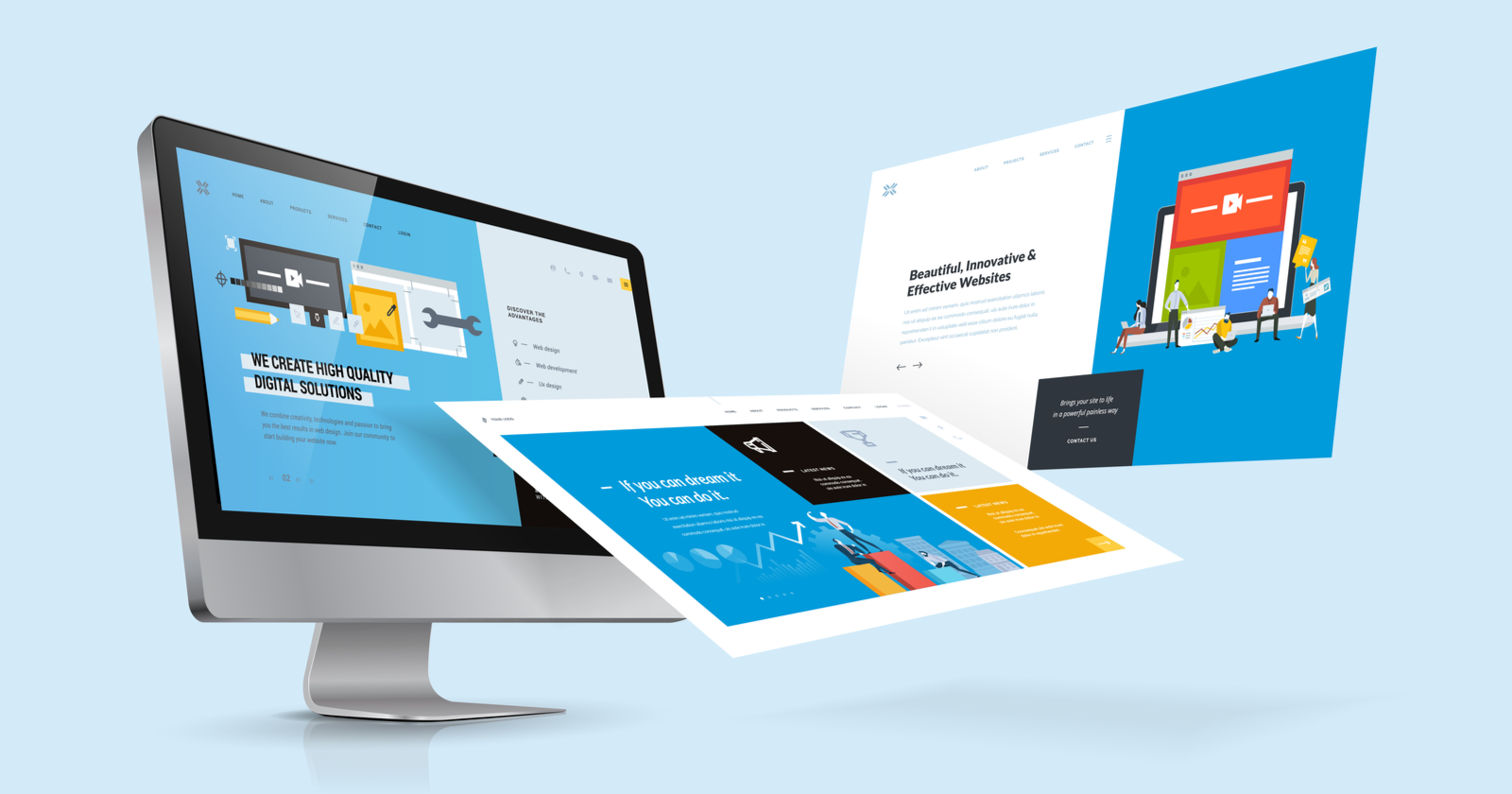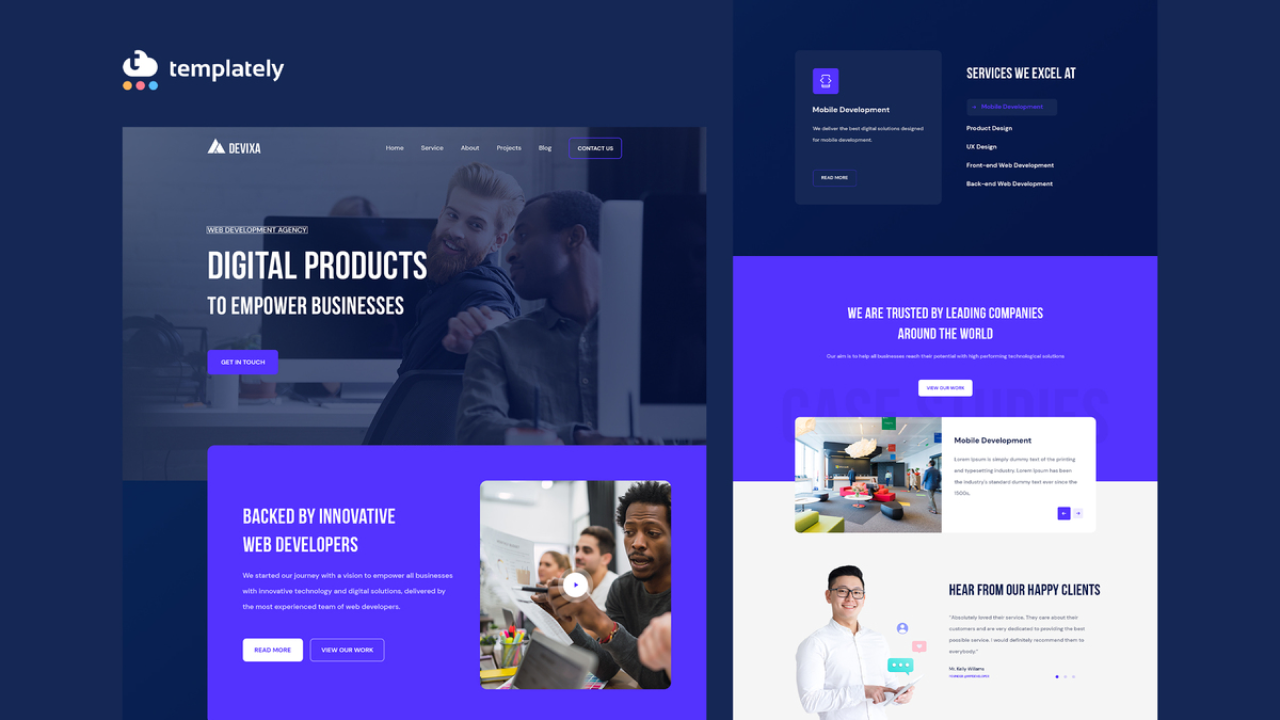Discovering the Various Kinds Of Website Design and Their Unique Benefits
The landscape of Web design encompasses a selection of styles, each offering unique advantages that accommodate different individual demands. Minimalist and level layouts stress clarity, while responsive and material layouts improve flexibility across gadgets. Illustrative and typography-driven approaches aim to boost engagement and psychological vibration. Understanding these diverse types can considerably impact customer experience and brand name assumption. What exists below the surface area of these design choices?
Minimal Web Layout
:max_bytes(150000):strip_icc()/GettyImages-502089743-56d780b93df78cfb37dbddf7-3ae7e3dd46b241678f5096f0101be925.jpg)
Minimalist Web style frequently includes a minimal shade combination and straightforward typography, which not only enhances looks yet additionally strengthens brand name identity. The reduced complexity can bring about much faster loading times, further boosting user satisfaction. Furthermore, by minimizing visual clutter, individuals can engage with content better, leading to enhanced comprehension and retention. Generally, minimalist website design fosters a seamless customer experience, making it a preferred selection for brands intending to share clearness and professionalism and reliability in their online existence.
Receptive Website Design
Receptive website design has actually become crucial in today's digital landscape, ensuring mobile compatibility for individuals throughout different gadgets. This method greatly improves individual experience by giving seamless navigating and accessibility, no matter screen size. As even more individuals access the Web on tablets and mobile phones, the importance of receptive design remains to grow.

Mobile Compatibility Significance
As mobile gadget use remains to climb, making certain internet sites work with numerous display dimensions has come to be essential for effective communication and involvement. Mobile compatibility, frequently achieved via responsive website design, permits websites to adjust perfectly to smartphones, tablet computers, and various other tools. This adaptability not only reaches a wider audience however likewise boosts brand name integrity. An internet site that operates well on smart phones mirrors professionalism and interest to customer needs. On top of that, internet search engine focus on mobile-friendly sites in their positions, making compatibility an essential element for on-line visibility. By buying mobile compatibility, businesses can enhance their electronic visibility and deal with the growing number of customers who access info on the go. Therefore, prioritizing mobile-responsive style is crucial in today's electronic landscape.
Improved User Experience

Apartment Style
Flat design is a minimalist approach to Web design that highlights simplicity and clarity. By eliminating three-dimensional components such as appearances, slopes, and shadows, level style produces an aesthetically appealing interface that prioritizes web content and performance. This style promotes an user-friendly navigation experience, as customers can quickly recognize key features and actions without interruption.
One of the key advantages of level design is its responsiveness across various tools and screen dimensions. Its tidy lines and straightforward formats adjust flawlessly, ensuring a constant experience for individuals on mobile, tablet, or desktop computer platforms. In addition, level design often integrates strong shades and typography, enhancing visual impact and brand acknowledgment.
Additionally, the simpleness intrinsic in flat layout brings about quicker filling times, which contributes favorably to user complete satisfaction - website development. On the whole, level layout continues to be a preferred selection for modern Web development, aligning with modern aesthetic choices while providing exceptional use
Material Style
Product Layout represents a design language created by Google that focuses on creating a intuitive and natural user experience across electronic systems. This method stresses the usage of grid-based formats, receptive computer animations, and depth impacts such as lighting and additional info shadows, which assist to create a sense of hierarchy and spatial partnerships. By mimicking the real world, Material Layout enables individuals to connect with electronic user interfaces in a more natural and engaging way.
Among the crucial benefits of Product Style is its adaptability throughout different devices and display dimensions, ensuring a constant experience for individuals. Additionally, it promotes a clear aesthetic language that boosts usability, making it easier for customers to navigate complicated applications. The incorporation of lively shades and bold typography also plays a vital function in accentuating vital components, consequently enhancing general individual engagement - branding. Material Layout has actually come to be a popular option among designers seeking to develop visually enticing and useful sites.
Typography-Driven Style
Typography-Driven Design concentrates on the calculated usage of kind to boost the functional and aesthetic facets of a site. This style method focuses on typefaces, font dimensions, spacing, and power structure to create aesthetic interest and guide customer experience. By very carefully picking typography, developers can communicate brand identity and evoke emotions, making the content much more accessible and appealing.
Effective typography enhances readability and usability, making certain that users can quickly browse the website and absorb details. The right mix of kind can likewise establish a clear visual hierarchy, enabling users to quickly recognize key messages and contacts us to activity.
A typography-driven method can be adapted to numerous devices, making certain uniformity throughout platforms. This adaptability is important in today's multi-device landscape, where individual experience is paramount. Eventually, Typography-Driven Layout offers not just as a creative selection yet additionally as a functional aspect that substantially influences an internet site's efficiency.
Illustrative Web Style
Illustrative Web style uses visual narration techniques that can greatly enhance individual involvement. By integrating distinct images, websites can develop a memorable brand identification that resonates with their target market. This approach not only mesmerizes visitors but likewise interacts messages in a visually engaging manner.
Visual Storytelling Strategies
A wide variety of Web designers employ visual storytelling strategies to create immersive and engaging customer experiences. This strategy incorporates images, design, and typography to tell a tale that reverberates with users on Read Full Article an emotional level. By integrating compelling visuals, designers can successfully communicate messages and evoke feelings, guiding visitors through a brand name's trip. Infographics, computer animations, and interactive components offer to improve narratives, making complex details a lot more easily accessible and unforgettable. Furthermore, aesthetic narration can establish a natural brand name identification, as regular images and motifs strengthen core worths and messages. Eventually, this technique not only mesmerizes customers but additionally cultivates a deeper link with the content, encouraging exploration and retention. Via skilled application, aesthetic storytelling changes typical Web experiences right into significant and dynamic communications.
Enhancing Individual Engagement
Efficient website design significantly enhances individual interaction by leveraging illustratory aspects that attract attention and foster communication. Images can streamline complex concepts, making them a lot more friendly and unforgettable for users. They break the monotony of text-heavy web pages, developing visual breaks that welcome exploration. In enhancement, one-of-a-kind pictures can stimulate feelings, urging individuals to connect with the content on a deeper level. Interactive components, such as animations or hover effects, can also improve involvement by inviting individuals to take part proactively rather than passively top article eating info. This strategy not just maintains visitors on the site longer yet also increases the chance of return sees. Inevitably, reliable illustratory website design transforms the user experience, making it more impactful and enjoyable.
Branding Through Illustration
Aesthetic aspects play a substantial duty fit a brand name's identity, and illustrations are an effective device hereof. Illustratory website design permits brands to convey their special character and values via custom artwork. This method promotes a deeper psychological connection with the audience, boosting memorability and involvement. By incorporating images, brand names can separate themselves in a congested market, creating a distinctive aesthetic story that resonates with their target demographic. In addition, pictures can make and simplify intricate ideas material extra easily accessible, successfully communicating messages in an appealing manner. Generally, branding through image not only improves the user experience but likewise reinforces brand recognition, making it a useful strategy for companies intending to establish a strong on-line existence.
Often Asked Questions
Exactly how Do I Choose the Right Website Design Kind for My Company?
To pick the right Web style kind for a company, one must assess objectives, target market, and industry requirements. Evaluating individual experience and capability will lead the option process for optimal interaction and efficiency.
What Devices Are Finest for Creating Different Web Style Designs?
Popular devices for developing varied website design styles consist of Adobe XD, Figma, Sketch, and WordPress. Each offers unique features customized to various layout demands, enabling designers to develop useful and aesthetically enticing internet sites successfully.
Just How Much Does Expert Web Style Typically Cost?
Professional Web design generally costs between $2,000 and $10,000, relying on intricacy, attributes, and developer experience. Custom-made services and recurring upkeep may raise expenses, while templates can use even more economical options for less complex projects.
Can I Incorporate Numerous Website Design Keys In Successfully?
Yes, integrating numerous website design kinds can be efficient. By integrating elements from various designs, designers can produce one-of-a-kind, interesting individual experiences that accommodate varied audiences while improving capability and visual charm.
How Do Style Patterns Influence Customer Experience and Engagement?
Design fads substantially affect user experience and involvement by improving visual allure, enhancing navigating, and cultivating emotional links - website development. Staying updated with fads permits developers to produce user-friendly user interfaces that resonate with users and motivate extended interactions
Minimal and level styles highlight clearness, while responsive and worldly styles boost adaptability across gadgets. It might seem counterproductive, minimalist Web style stresses simpleness to enhance customer experience. Responsive Web style plays a vital role in improving customer experience by making sure that a site adjusts flawlessly to numerous screen dimensions and devices. Level style is a minimal method to Web design that stresses simpleness and quality. Product Layout stands for a style language created by Google that focuses on developing a cohesive and intuitive individual experience throughout digital systems.